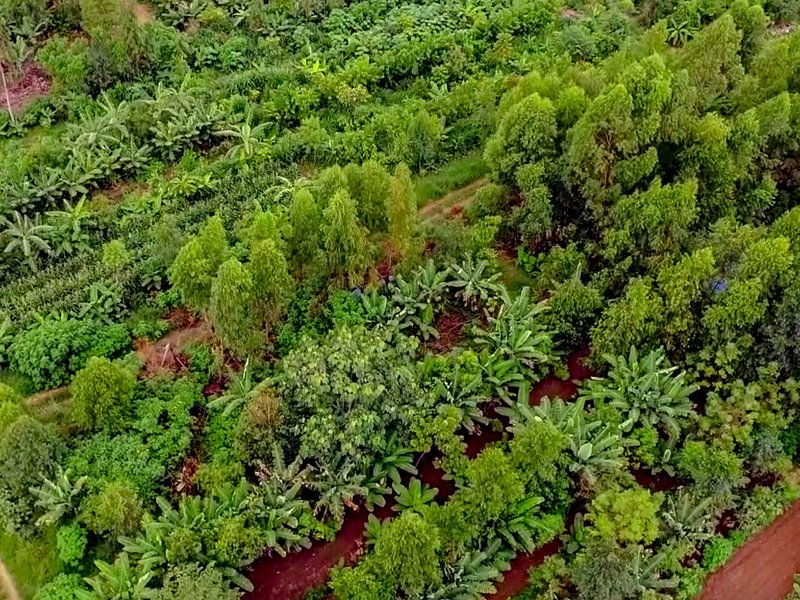
Syntropic Agroforestry
Transformative productivity & opportunity for smallholders and commercial farms
An approach that understands and utilises nature’s mechanisms to
Accelerate the growth of food forests which produce high quality and quantities of food year-round, while rehabilitating soil to fertility, generating incomes, and capturing carbon in a system that provides the most abundance for the least input.
The urgent need for a new approach
Current common farming approaches result in poor crop yields and low food security, with a greater risk of suffering from shock climate events.
Continuous tilling creates a solid layer below top soil which roots and water can’t penetrate, stunting plant growth. Lack of tree shade and roots mean crops are scorched by the sun and water evaporates. Rain hits the ground directly, the force washing away top soil and nutrients, as well as applied pesticides causing further problems.
The soil that remains becomes just ‘dirt’. Cultivation of the same crops each harvest deplete the soil of nutrients. The conditions and approaches disrupt the complex web of micro-organisms that make up a healthy soil and are responsible for making nutrients available.
Syntropic Agroforestry
This regenerative agriculture approach mimics nature’s mechanisms to accelerate the growth of highly productive forests - offering a transformation to abundance and prosperity.
-
Food from day 50 to year 50.
Employing an approach with extreme density of planting and diversity of species, with improved soils, gives larger harvests of multiple different foods year-round, and over years. The overall production for the land is increased, nutrition is improved and farmers have more consistent food access.
-
Commerciality at its heart.
The system is designed with farmer prosperity in focus. Diverse crops with strong yields provide diverse offtake opportunities and income generating options. There is no lost income waiting for trees to grow in an approach that is growing at every moment. The self fertilising and pest reducing nature reduces costs also.
-
From 'dirt' to healthy living soil.
This regenerative approach heals soil - restoring the living biome, self fertilising through plants grown and mulched, stabilising through roots and tree protection - trapping carbon and increasing yields realised.
-
Shock-proofed productivity.
Soils are stabilised by root structures and tree layers slowing rain fall. Water is made available for longer through healthier soils and tree shade reducing evaporation. Diverse species provide diverse harvests and income options offsetting risk if a crop fails or market falls.
-
Maximum production for minumum input.
While understanding the system and designing the implementation is complex, our process guides farmers and requires less effort overall to implement the approach than standard annual farming practices. Further savings are made through the natural pest reduction and fertilisation the approach offers.
-
Carbon captured, biodiversity boosted.
Contributing to the overall health of the world, this farming approach captures substantial carbon in trees and the soil, while also boosting biodiversity, vital for functioning and healthy ecosystems.

Syntropic Agroforestry is designed across space and time - species are selected and positioned to occupy every niche, at extreme density and optimising inter-species relationships, while mimicking natural succession for multiple crops in a year, over many years.
— Example shown of site in Brazil, where the approach originates
Get green growing!
Green Growth Development design, implement and maintain syntropic agroforestry, with approaches for smallholder farmers and commercial farms. Get in touch to discucss how we can help you get the most from your, or your farmer partners’, land.


